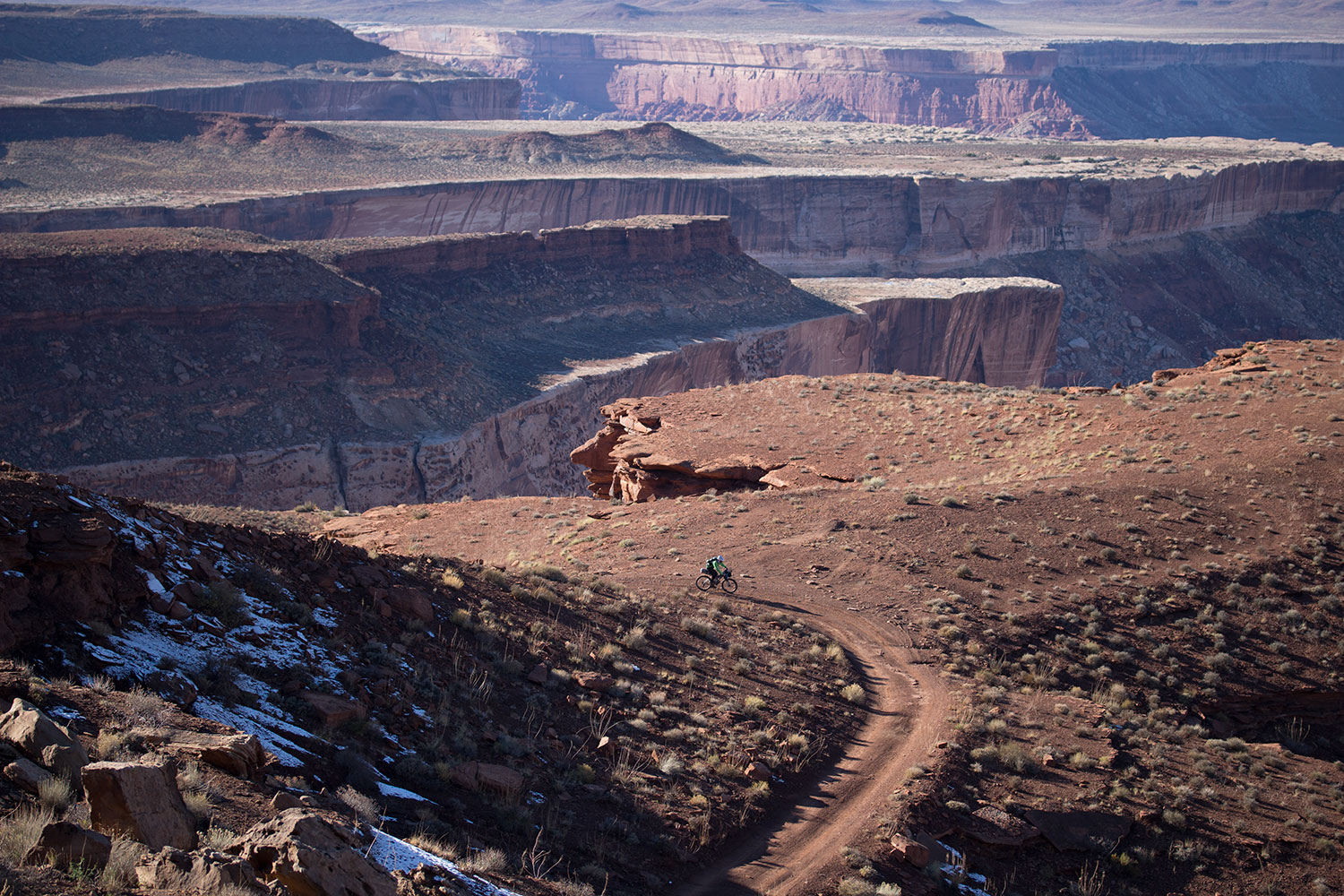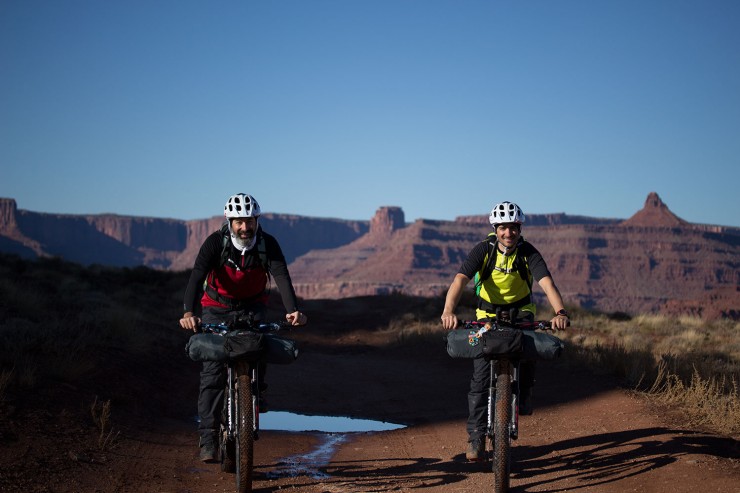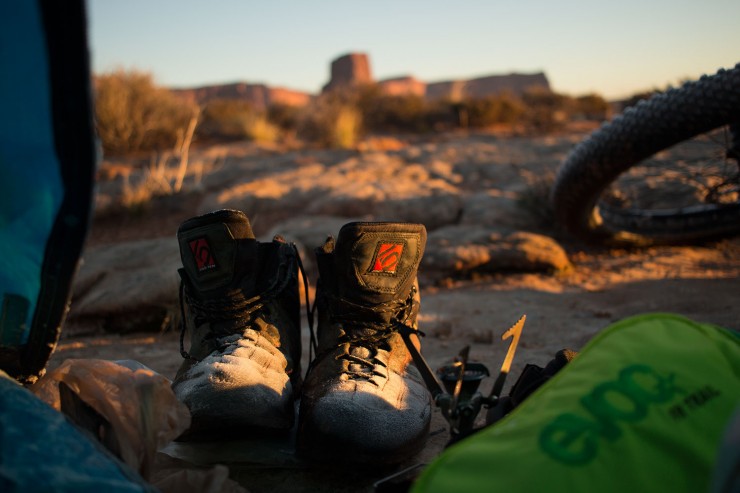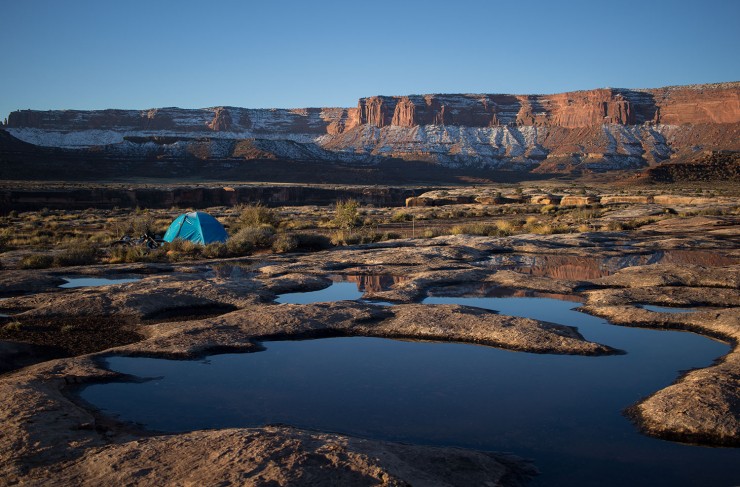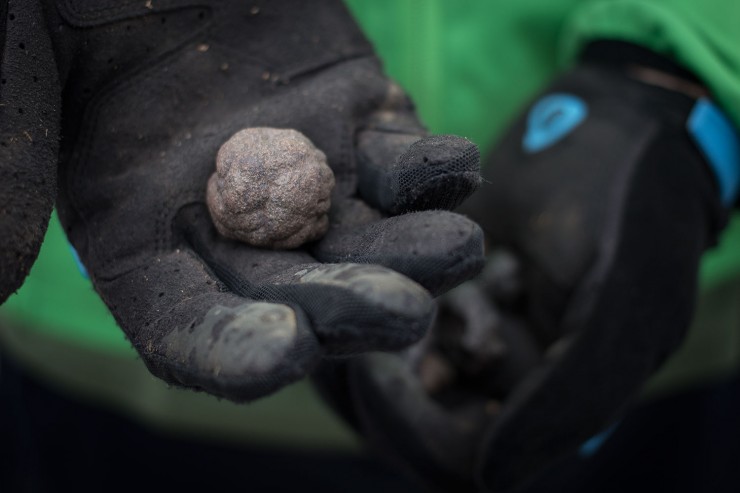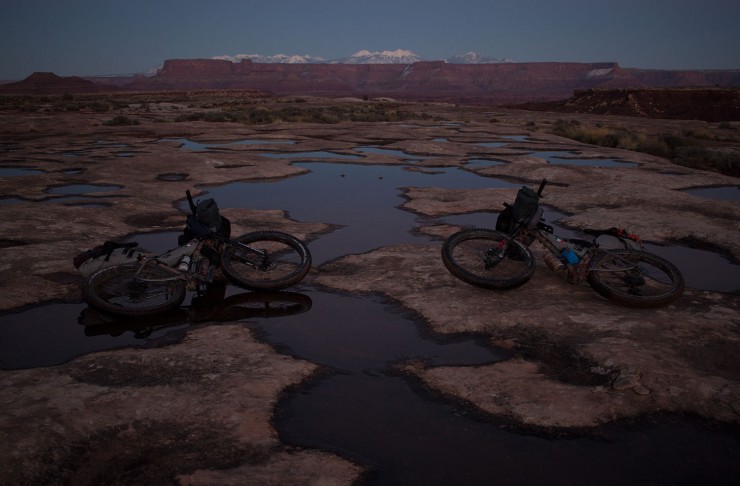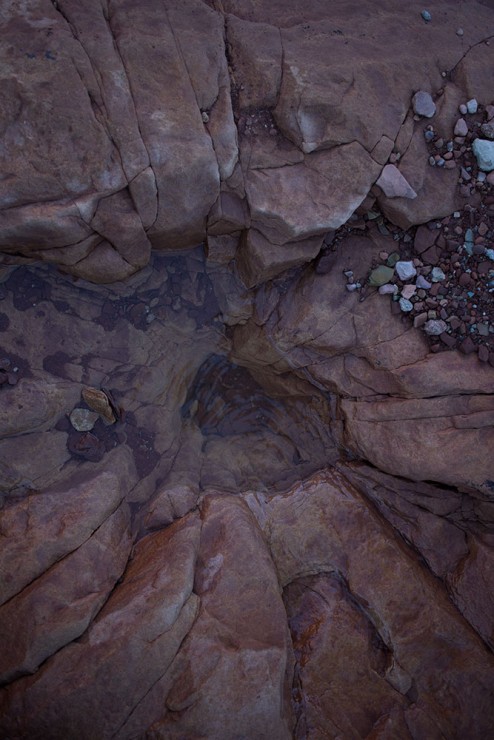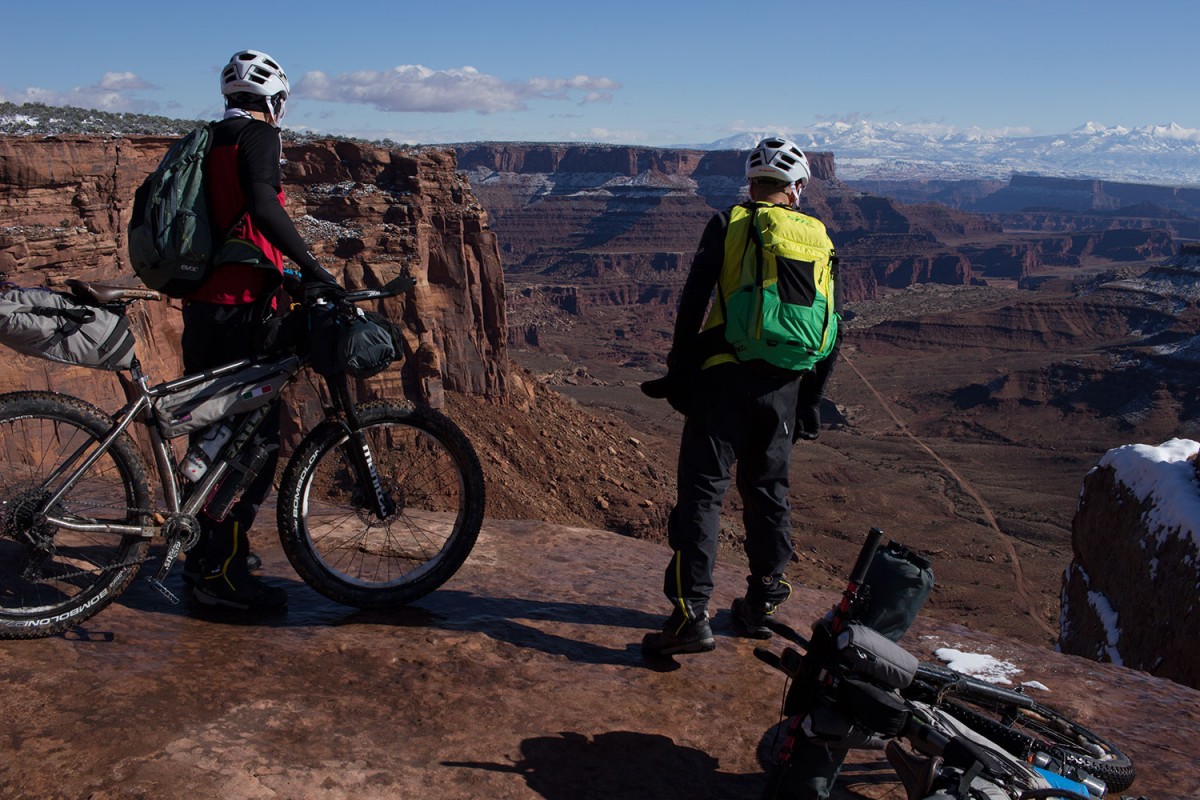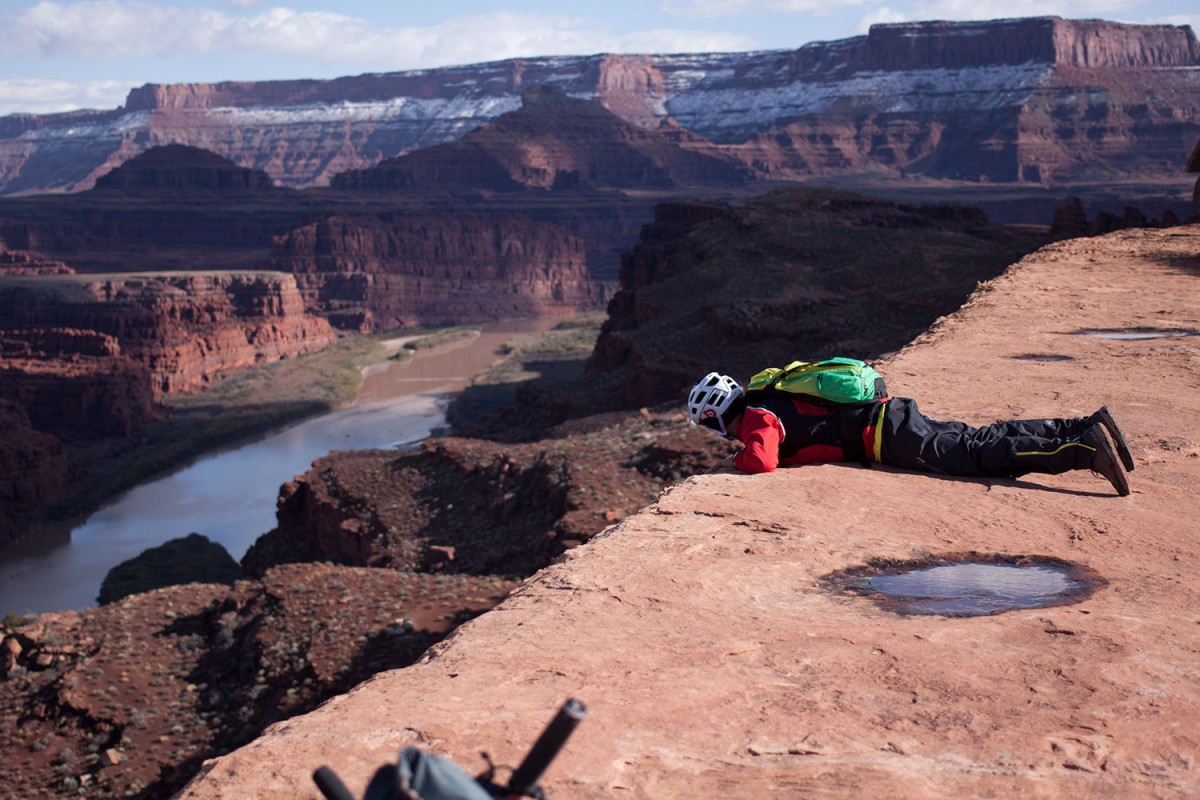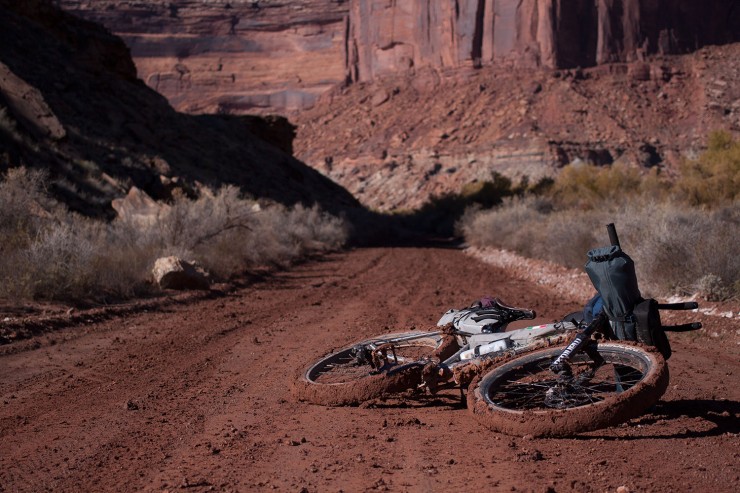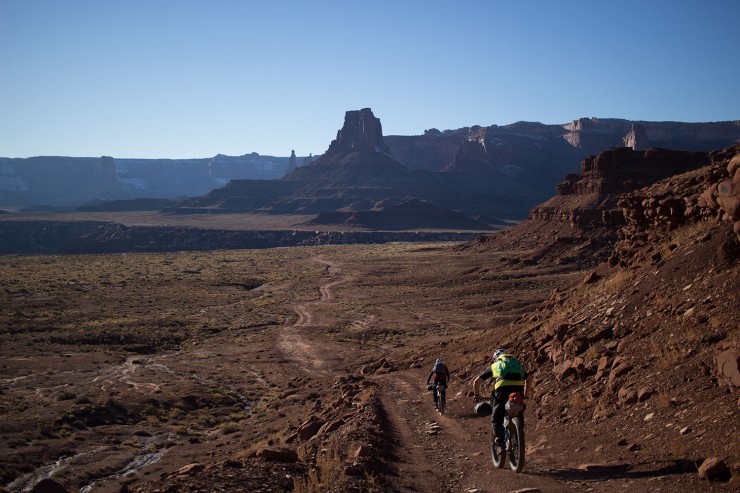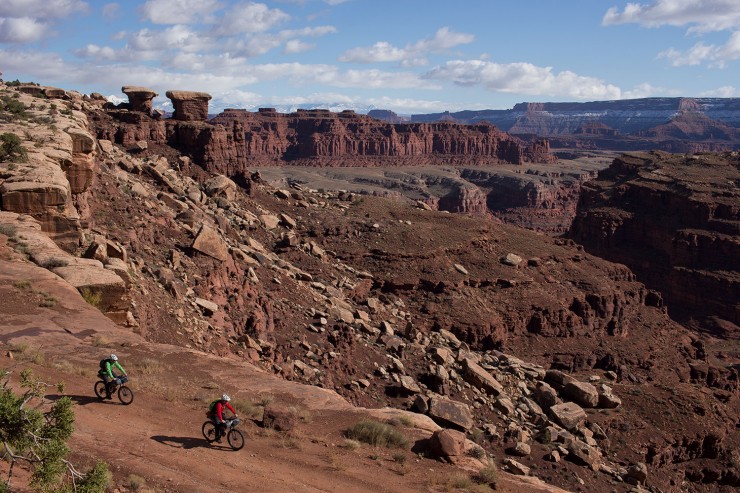The White Rim: MONTANUS in the Utah desert
Sometimes I think back to my childhood, when I returned hastily from school to board the USS Enterprise with Captain Kirk and “explore strange new worlds, to seek other forms of life and civilization… to go where no man has gone before.”
PUBLISHED Jun 7, 2016
Words and photos by MONTANUS
Those were the years in which we grew up on bread, Nutella and adventure. The adventure was in the TV series, the comic books, cartoons, in the Camel Trophy, and especially in our young eyes that would nightly would look at the world with such curiosity.”
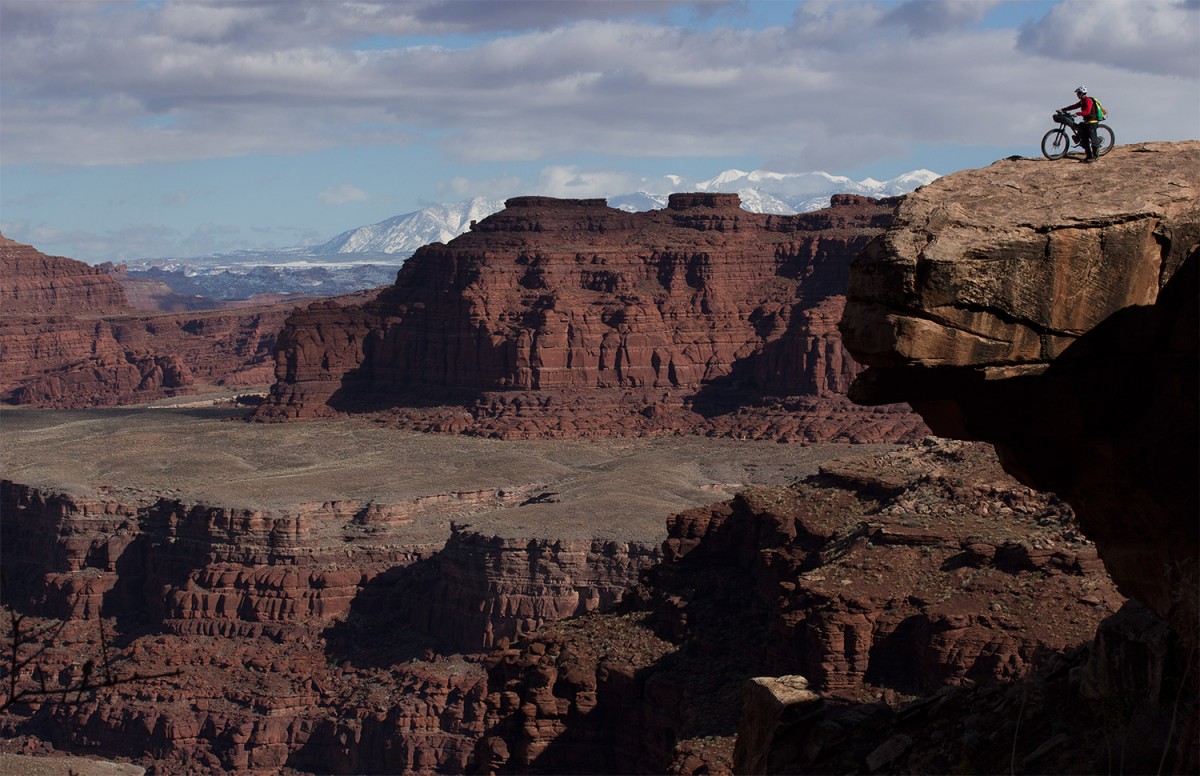
Curiosity… that appetite for exploration, that instinct that moves man to both small personal discoveries, or to great achievements for humanity. Those were the days when, on board our childhood 20″ bikes, we began to explore the world beyond the confines of our backyard. As a consequence of this nostalgia, inspired by yellowed yellow colored memories and vintage photos, we found ourselves flying over the Atlantic Ocean, destination the Utah desert. We had prepared the bikes in full bikepacking trim to travel the White Rim, a 158 km loop inside the Canyonlands, an area west of the Rocky Mountains characterised by remote canyons and amazing scenery. An immense prehistoric amphitheater that we were preparing to explore with complete self-sufficiency, taking the bare minimum: tent, sleeping bag, food and water for three days.

Day 1
Overnight there had raged a blizzard, covering the upper part of the mesa – offering us what was our best experience, somewhere between the epic and surreal. At 9 o’clock on that cold November morning, we hop on our saddles and take to the Shafer Trail, a dirt road that has been used as a trail for horses since 1917, notably by the entrepreneurial cattleman Sog Shafer. That track would take us, after a drastic drop in altitude, to the White Rim’s plateau. The fresh blanket of snow still immaculate, we sense that we are the first to go from there and we would also be the only ones for the following days. (Later we found out that access to the area was prohibited due to the presence of ice on the ramps). As soon as the road opens on the landscape, the instinct to look beyond diverts our attention to a huge rock that seems to float in the air due in part to the sheer drop down to the valley. Assaulted by a wave of emotions and dizziness, we cling to the handlebars looking for a secure grip, while our gaze is lost in the distance. The first real face to face with the immensity of it all. Pure amazement and silence. Astonished we try to define the horizon surrounded by ancient red sandstone cathedrals in which we lose our route. We continue the march while the winding alley funnels us on to the plateau in a series of switchbacks made treacherous by icy surfaces. There is something in this reminiscent to Dante’s descent into hell. Once in the valley we are filled with a sense of horizontal vertigo that resets and then multiplies all perception. The immense vastness blinds us and saturates the retinas. The mind struggles to delineate the snowy peaks of the Rocky Mountains, which rise to almost 4000 meters and then plunge into the canyon from the abyssal depths. After some brisk miles, we arrive at a point where we can make out the Colorado River. There we lay on our chests at the edge of the canyon. Below us the river flows slow and majestic in its unceasing erosion. The day is spent in a succession of miles and contemplative stops. Like two kids in a candy store, we lay eyes everywhere and we would like to bring home everything. Our shadows begin to lose intensity. We decide to pitch camp in a wide area at the rocky and rather flat bottom. We proceed in a zig zag between countless puddles of rainwater, through the remains of the day before we come to a halt. We are 500 meters lower compared to the snow. Tents pitched, we nibble a little something, put on dry clothes and clamber into our sleeping bags. It’s night and we allow ourselves the luxury of reliving the day through pictures, to scour the dream from reality. Cold and fatigue are taking their toll, but before going to sleep we put our heads out of the tent and our eyes to heavens. This time we are truly traveling with Kirk.
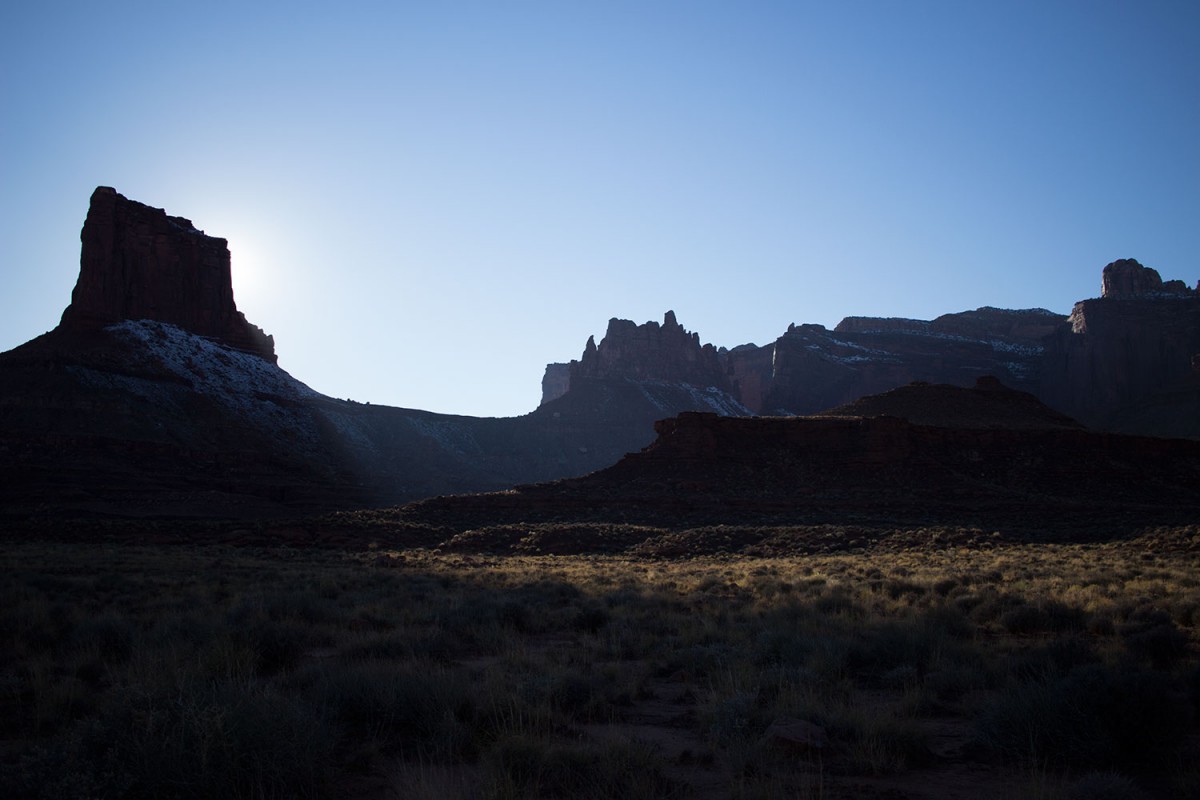
Day 2
The following morning, the frost that covers the tent and bicycle confirms the hard night just passed; we had to wear our down jackets despite our plush sleeping bags which are rated down to -10°. After a hearty breakfast, we reorganise ourselves and soon we’re on our way towards White Crack, the southernmost area of the loop. The road stretching out in front of us alternates between rocky, red clay and fine sand. Under loaded conditions and the terrain, sometimes compact, sometimes loose, the 3 “tires were a good choice. All day is a procession of spectacular scenery. Mile upon mile alternating between canyons and towering formations, peaking between terrestrial folds like the pages of a million year old family album. In the distance it seems to be the skyline of a metropolis; it can not be, it is a mirage! We advance and allow ourselves to slip alongside this bizarre stone Manhatthan. After reaching and passing yet another canyon, there opens up before us a rocky valley delineated by huge pinnacles that accompany the fracture toward the Colorado River. Later we learn it was the most impressive of the White Rim area, Monument Basin. It was as evocative and breathtaking as anywhere else within the entire 158km White Rim. Sitting on the edge of the canyon we remain for a while to study the incredible architecture. After the White Crack, we begin to climb towards the north, leaving behind us the Colorado River; from then on, we would accompany the Green River. Later we cross a huge fracture area, where erosion had anchored mammoth stone vessels from the creeks of a resurfaced Mariana Trench; we call that place “The Port” and continue. Food supplies, especially water, are becoming scarce, so we decided to carry on for another stretch before dark. Pitching camp on the edge of a canyon, we do a walking tour to explore the area and lean out over the Green River. But our attention is drawn to a myriad of anthracite spherical rocks—some as big as walnuts—which cover a wide area not far from our camp. We fail to understand their origin nor their form.*
*They are “Moqui Marbles” named after the Native American tribe that worshiped them as talismans. They are rough spherical stones, mysteriously formed about 130 million to 155 million years ago. The outer part is formed by a massive natural iron deposit and the interior is composed of very fine coral-colored sandstone.
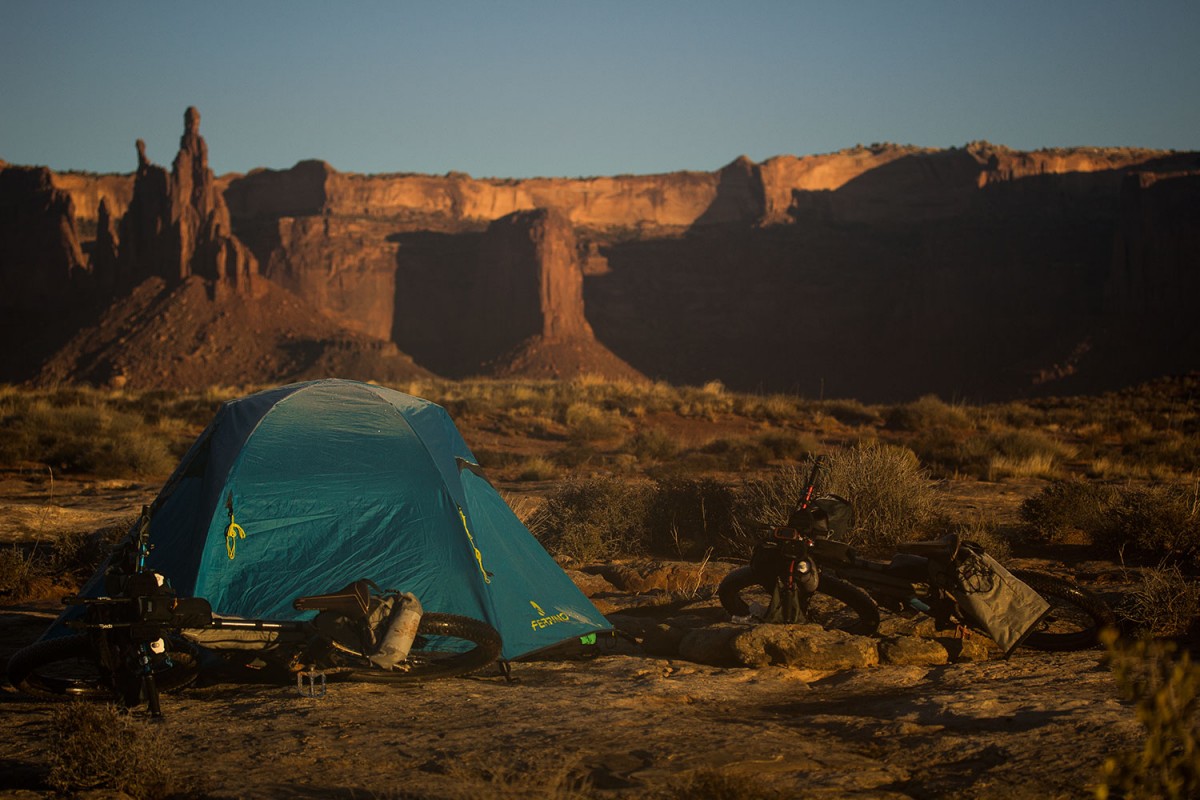
Day 3
The second night was much better than the first, despite the temperatures being even more frigid. This time we wore all of our available clothing; next to our skin we put our dry clothes, the wet above them. Cicciobello instead sports a fine coat of frost, but soon it will be gone. During the course of the day we would alternate between pedalling and pushing, head down, up the killer ramps. In the shadow of the Green River, the humidity dials the challenge to 11, freezing the sweat as we toil, then drops the ace of clubs directly between the wheels.* A thick layer of red mud blocks us, clinging to the tires and leaving a mush on the chain that undermines any attempt to advance. We advance only a few hundred meters in an hour, with the wheels locked between fork and dropouts, and transmission completely out of order thanks to the accumulation of mud. With water running out, we try to clean at least the chain, chainrings and hub, first with dry branches and then pissing from above. Believe me it is better to drink water and piss on the chain than vice versa! Back in the saddle and now the climb that would transport us out of the White Rim… when a herd of deer, majestic and graceful in their gait appear before us. We grapple for our cameras to immortalise their image, but we are too slow and only manage to capture the tail end, before even that disappears into the bushes. We arrive at the Horsethief Trail, an avenue that will take us to the top of the mesa. The slope is steep, head down we pedal slowly, when suddenly a thunderous roar bursts, breaking the stillness that accompanied us now for three days. No time to dismount, we throw a quick look around, but we do not see anything that would justify that noise. We continue pedalling when, shortly after, we feel again that roar. This time we stop, we look up and see the swollen sail of a parachute, to our ears the burst of sailcloth had seemed like an explosion. Some base jumpers are launching from a tower to land just below, after just a blink of an eye! There also launches a third, we follow him with our eyes until it lands, and we continue to climb. The ascent is exhausting. A little further on, we cross an old Volvo, descending along the hairpin bends. Leaning out the window, a guy in his sixties, cigar and moustache white, slows down and yells “You’re machines!” We salute you and thank you for the encouragement that urges us to reach the top of the mesa. The last 30 km stretch are on Mineral Road, a seemingly endless road which will rob us of every last ounce of energy.
*An Italian expression translating to ‘put a spanner in the works’… meaning something that ‘makes the riding more difficult’.
We do not know if we are the first Italians to travel the White Rim by bike, we just hope that we will not be the last. From the experience, there still remains the adventure, exploration, freedom, but above all the certainty of having found the instinct that, years before, had pushed us beyond our backyard.
With thanks
To FATlab for creating the Tutumaz, a light and super comfy 27,5+ titanium beast. To Michele ‘Nure’ Boschetti and his brand MissGrape, for providing us with his tough bags. To MSR and Therm-a-Rest for making our lives easier in the desert with the ultralight NeoAir Xlite and the minimalist MicroRocket stove. To all the other brands that supported this trip: Adidas Eyewear, EVOC, FiveTen, Vittoria, Chromag, Formula, KS, DEDA Elements and 661.
About Montanus
Montanus is an two-man all-seasons bikepacking project, born in Abruzzo, the Italian region where the mountain chain Gran Sasso d’Italia shows its majesty. Montanus is an attitude, an intimate journey. If you’re not already, make sure to follow them on Instagram, Facebook, and their website.
Tips for Bikepacking The White Rim
Here are a few things to note about bikepacking the White Rim. To view the full route guide, click here.
- Logistics: It takes 2-4 days to ride the White Rim. Three days is the typical agenda. It is required to obtain and carry a backcountry permit which is reservable online or available for purchase at the Island in The Sky Visitors Center.
- When to go: Spring and fall are the best times to ride the White Rim (April/May or September/October are ideal). The highest point on the route is over 6,000 feet so nighttime temps can dip well below freezing anytime of year; bring proper clothing. Also, be prepared for snow.
- The ideal bike: The sand can be fairly thick near the river bottom areas and sometimes challenging for even a fatbike; large tires are recommended, although not necessary for 95% of the route. In our opinion, the ideal bike is a ‘Plus Bike‘. However, a lot of folks ride on a standard mountain bike with 2.1 or larger tires.
- Camping: Designated campsites must be reserved well in advance and some are booked over a year in advance. There is a map in the visitor center that provides ‘zone’ boundaries for backcountry camping; but the rules are a little tricky for cyclists who are prohibited from designated hiking trails and off the roads, so it’s necessary to stash your bike along the road or carry it in order to hike to the permitted zone. Abide by common sense, Leave No Trace practices when hiking and camping (try and stay on bedrock, etc.) This is a destination route, and as such it experiences a lot of tours and visitors. If you choose to bikepack this route, please follow the rules and leave no trace, and better yet, pick up trash you see along the way to make it better. Doing so will help preserve this area for future use rights.
- Water: There is only one reliable water source on the route, the Green River. During wetter times, there may be water available in puddle form, but if you’re intending to stay more than one night, carrying a lot, or caching water is recommended.

Please keep the conversation civil, constructive, and inclusive, or your comment will be removed.







